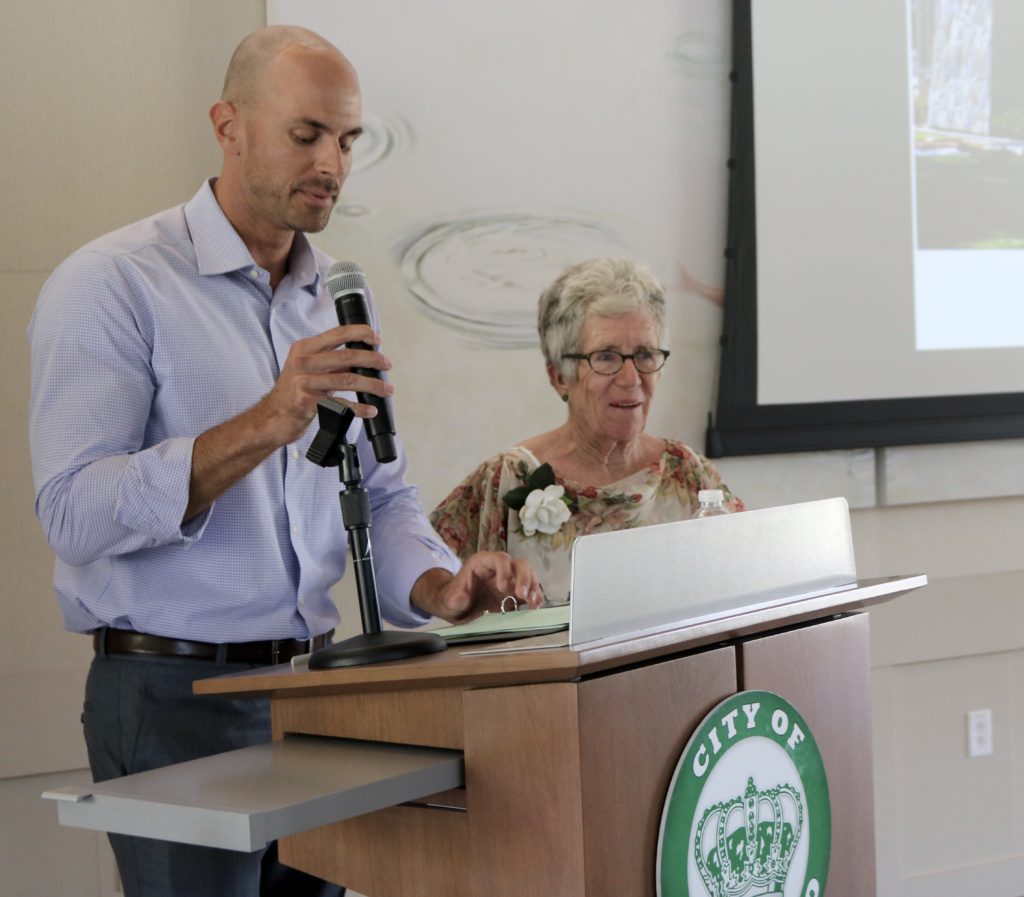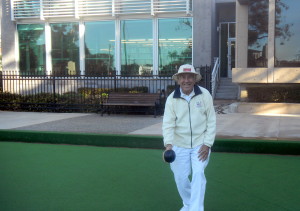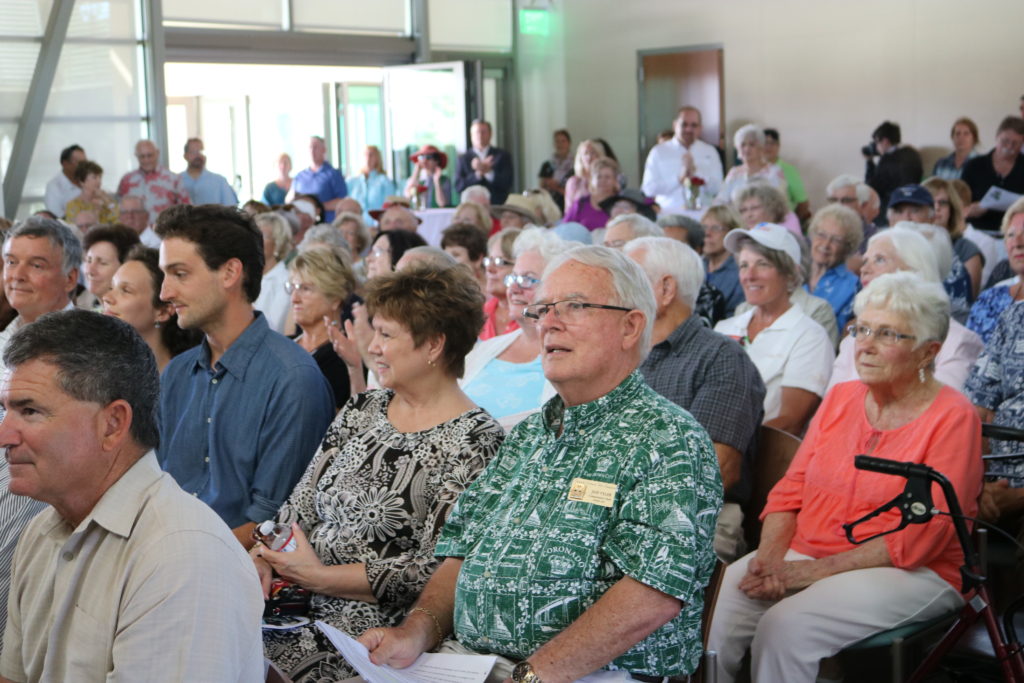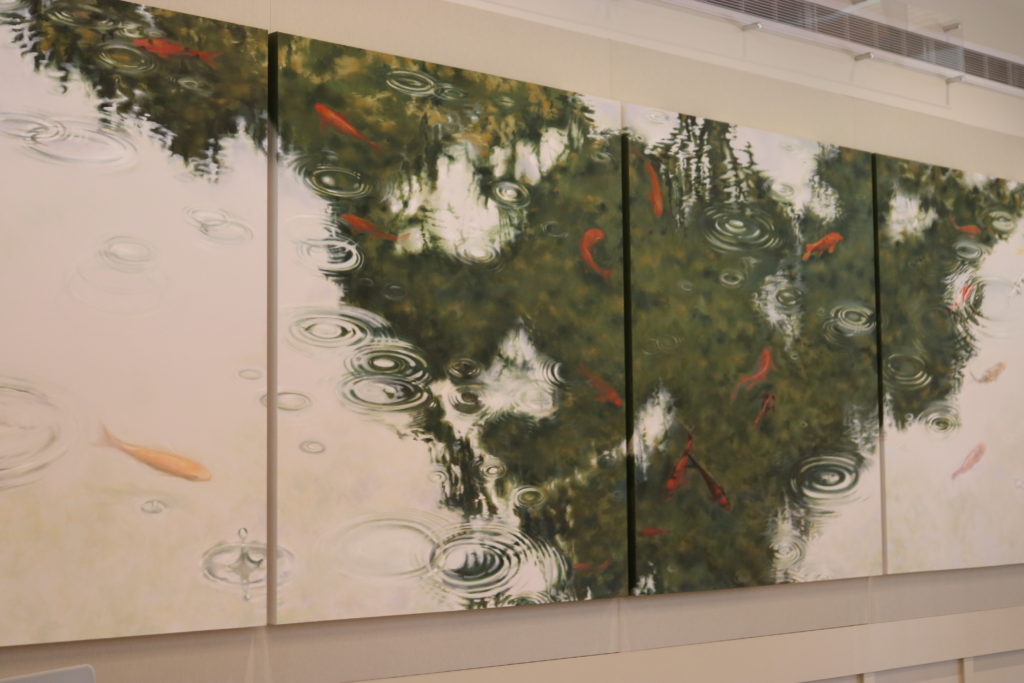
Two of Coronado’s most dedicated volunteers, Francette Roeder and Bill Hiscock, were honored by the City of Coronado on Tuesday at the John D. Spreckels Center and Bowling Green, a venue both championed. The capacity crowd also witnessed the unveiling of “Tea Garden – 1904,” a quadriptych (four part work of art) that now graces the back wall of the Grand Room South. Mayor Richard Bailey called it “another jewel in Coronado’s crown.”
For many it was Roeder and Hiscock who were the true jewels. “You had the vision,” Linda Rahn said to Roeder in a tribute video shown at the unveiling. “You had the passion and the patience to stick with it.” The former director of recreation, who retired two years ago, oversaw the project’s development. Roeder’s original vision, according to Rahn was simply “to spruce up the senior center and liven up some of the programs.”

Around the time that Roeder was looking to “spruce up” the place, Hiscock had a grander vision. He wanted to create a “world class lawn bowling green for championship play where players from near and far would came say, ‘this is a green I want to play on,’” Rahn said.
Like Roeder, Hiscock worked tirelessly to realize his dream. Both bombarded the city council with letters, postcards and e-mail. They packed city council chambers with supporters. Never letting up, never letting the council forget the city’s seniors and its lawn bowlers. “Thank you for your love of lawn bowling, your love of community and for giving so freely of that love to everyone,” Rahn said.

A plaque honoring Roeder is mounted on a bench at the Spreckels Center’s entrance. A plaque in front of the bowling green recognizes Hiscock.

“Tea Garden – 1904,” a six-foot by 20-foot oil on canvas, was inspired by the Japanese Gardens that graced the Spreckels Mansion (now the Glorietta Bay Inn) for close to a half a century. John D. Spreckels commissioned the gardens to serve as “a recreational and relaxation outlet for the guests of the Hotel del Coronado,” wrote Campbell Schengel. An assistant teacher at the Otay Ranch Academy of the Arts, Schengel wrote a history of the gardens for the Coronado Historical Association.

The canvas by Bronle Crosby takes up the back wall of the Center’s Ground Room South, just off the bowling green. An abstract realist painter, Crosby’s focus on natural history was also inspired by the tree in the front lawn of the center. The original tea garden featured a coy pond, a motif prominent in Crosby’s work. Popular in its day with residents and visitors alike, the garden fell out of favor after Pearl Harbor. It was demolished and the land was subdivided in the late 1940s, according to Schengel.
This is the second public arts project the Coronado Cultural Arts Commission has brought to the Spreckels Center. Jon Koehler’s “Transitions” towers over the garden on Orange Ave. The stainless-steel kinetic sculpture was installed last year.




